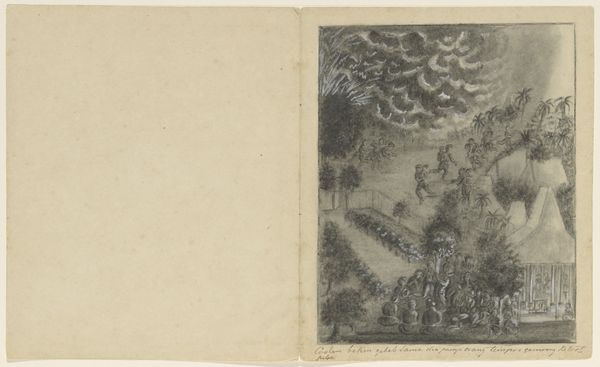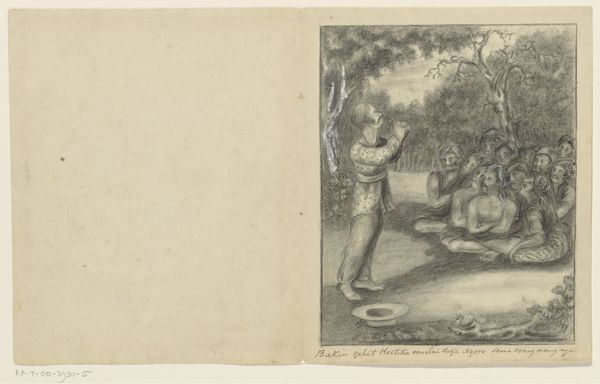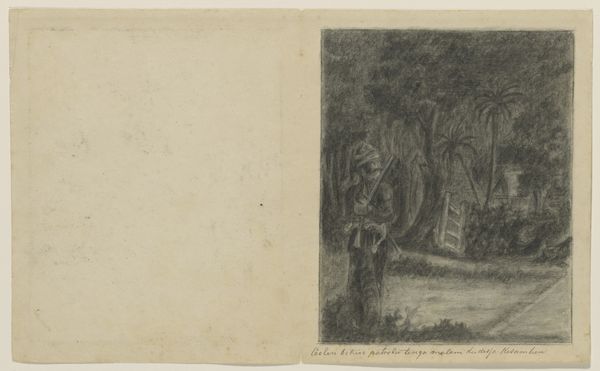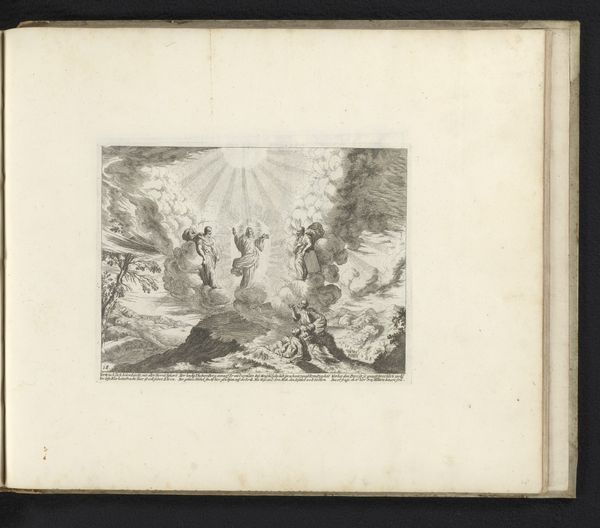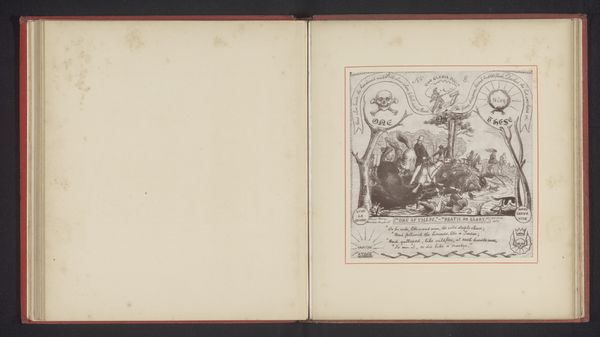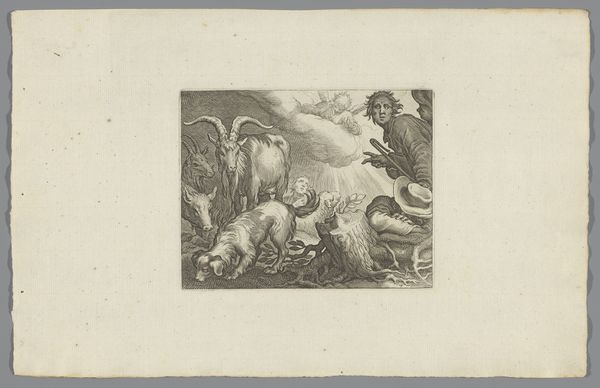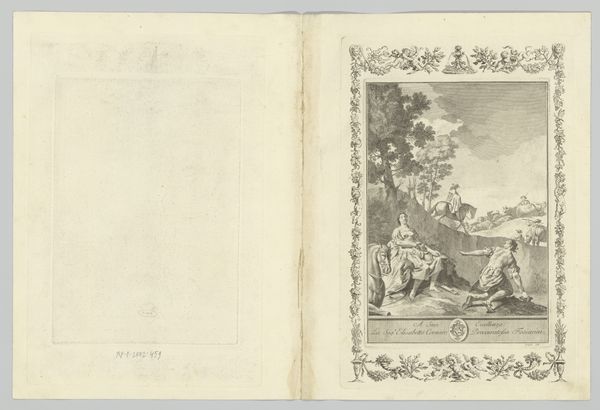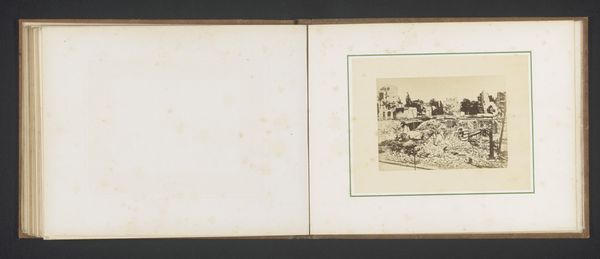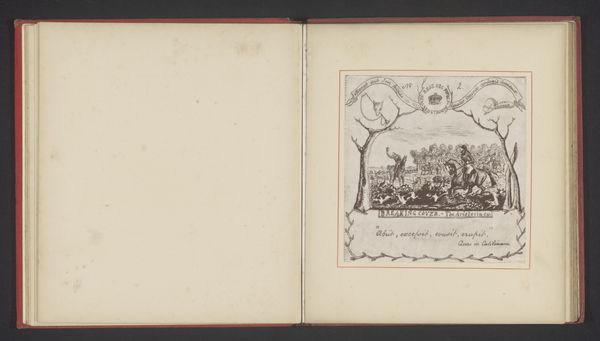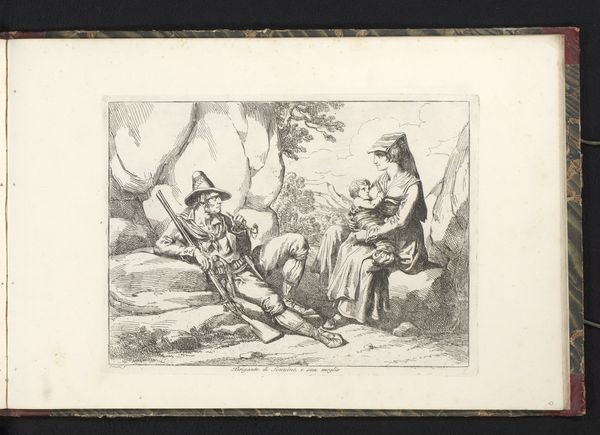
Dimensions: height 203 mm, width 168 mm
Copyright: Rijks Museum: Open Domain
Curator: At first glance, I perceive the essence of imminent destruction and abject fear. The tones of the drawing, limited to greyscale, give an old, somber look. Editor: This pencil drawing, titled "Uitbarsting van de vulkaan Kelud, ca. 1820-1850," is an anonymous work that captures an eruption of Mount Kelud in Indonesia, some time in the mid-19th century. It’s interesting how the artist chose to depict this dramatic natural event. Curator: It appears as if the people are praying or surrendering to the volcanic eruption; their symbolism indicates submission to the superior natural world. The image also strikes me as something out of Romanticism's obsession with the power of nature. Editor: Exactly. This work aligns with the Romantic fascination with nature’s sublime power, especially as European artists interpreted and represented Southeast Asian landscapes during the colonial period. The 'anonymous' tag highlights an interesting issue—the identities and perspectives of the local populations depicted are absent. Curator: What resonates with me, further, is how the volcano's eruption becomes a spectacle. The radiant explosions seem strangely theatrical, like fireworks, despite the obvious danger they pose. I am intrigued by how culture can transform catastrophes into performative drama, both terrifying and beautiful. Editor: It also encourages contemplation regarding power relations; how can we use artistic endeavors such as this drawing to amplify voices or to comprehend local accounts of seismic activity at this time? Or even how can the narrative of a devastating volcano come to be seen and told, or rather drawn? Curator: Well said; understanding the socio-political contexts behind its creation is key, which perhaps were less innocent than the naturalism seems to portray. I wonder about its impact when originally displayed, considering European viewers might've interpreted the image of supplication in varied ways. Editor: I also think that through its reliance on universally resonant symbols – natural destruction and human fragility, fear – it touches something fundamentally visceral. Curator: Ultimately, a powerful reminder of nature's force, and our small place within its vast scheme. Editor: A drawing like this opens up pathways to consider our own place in both history and environment.
Comments
No comments
Be the first to comment and join the conversation on the ultimate creative platform.
